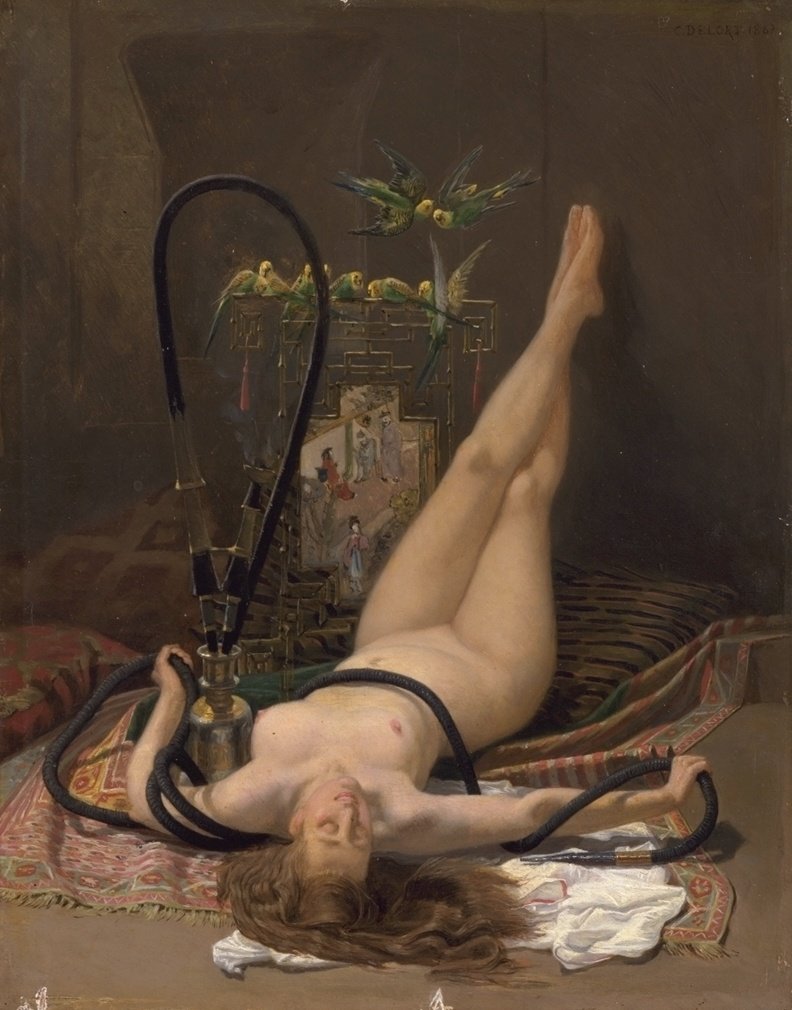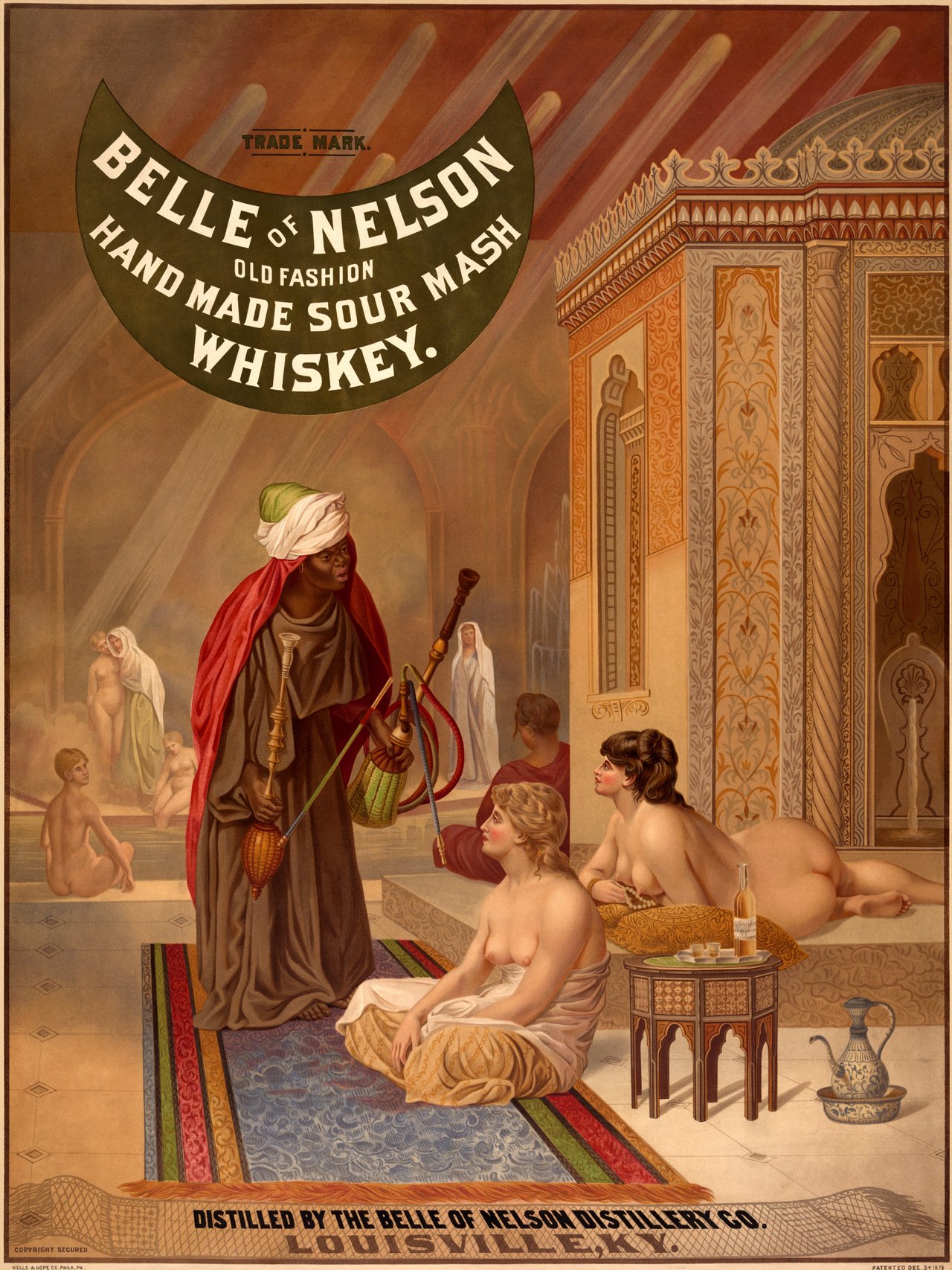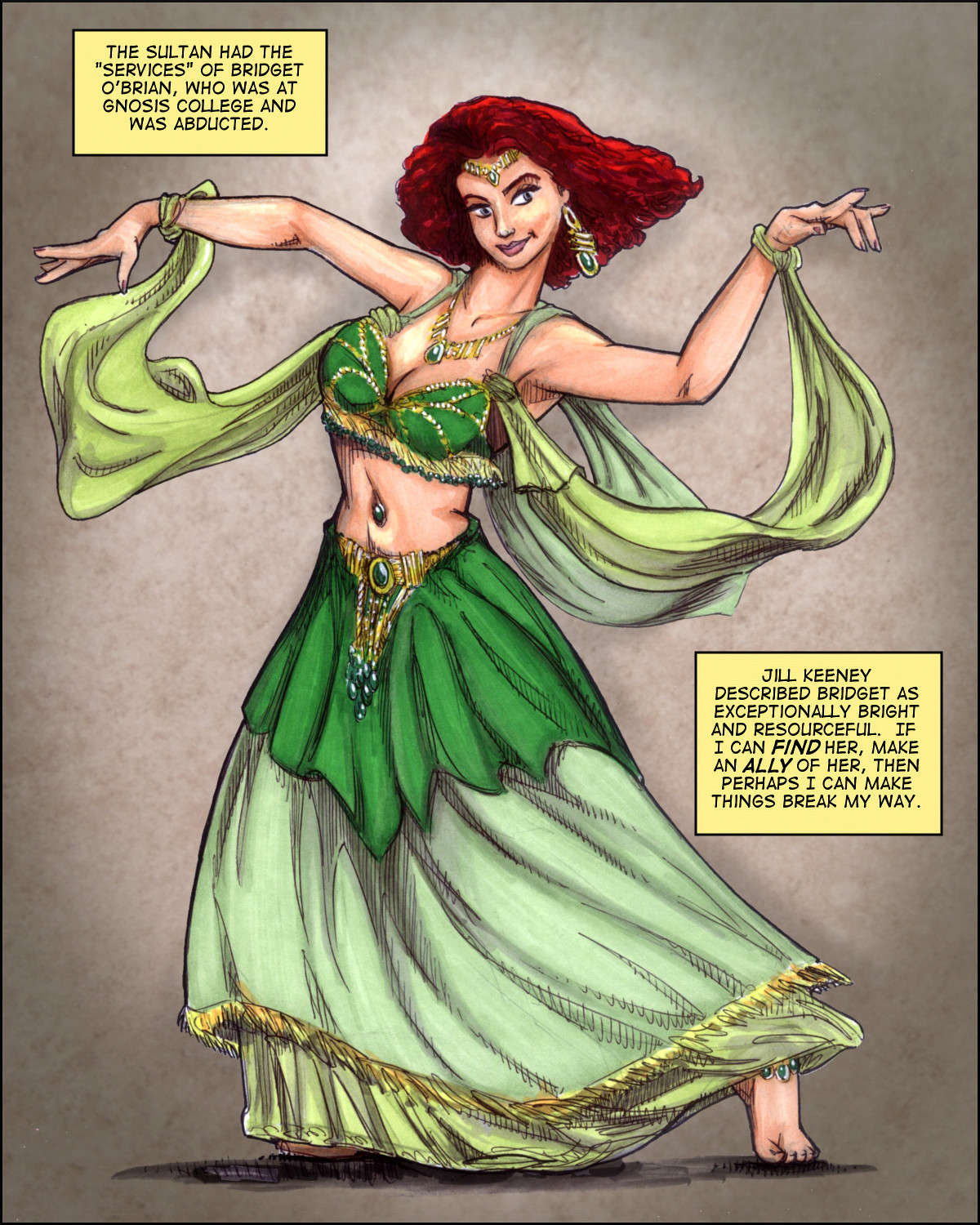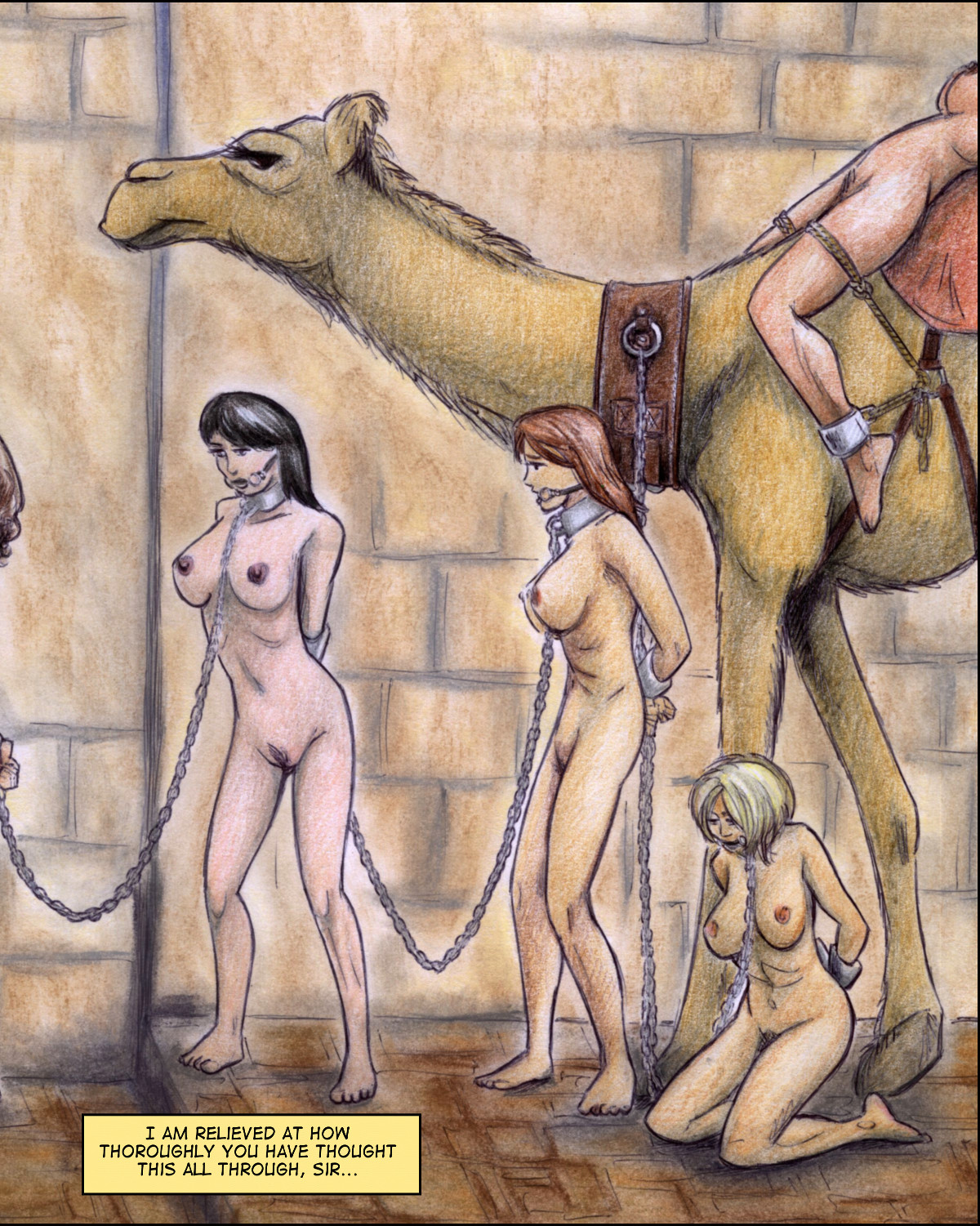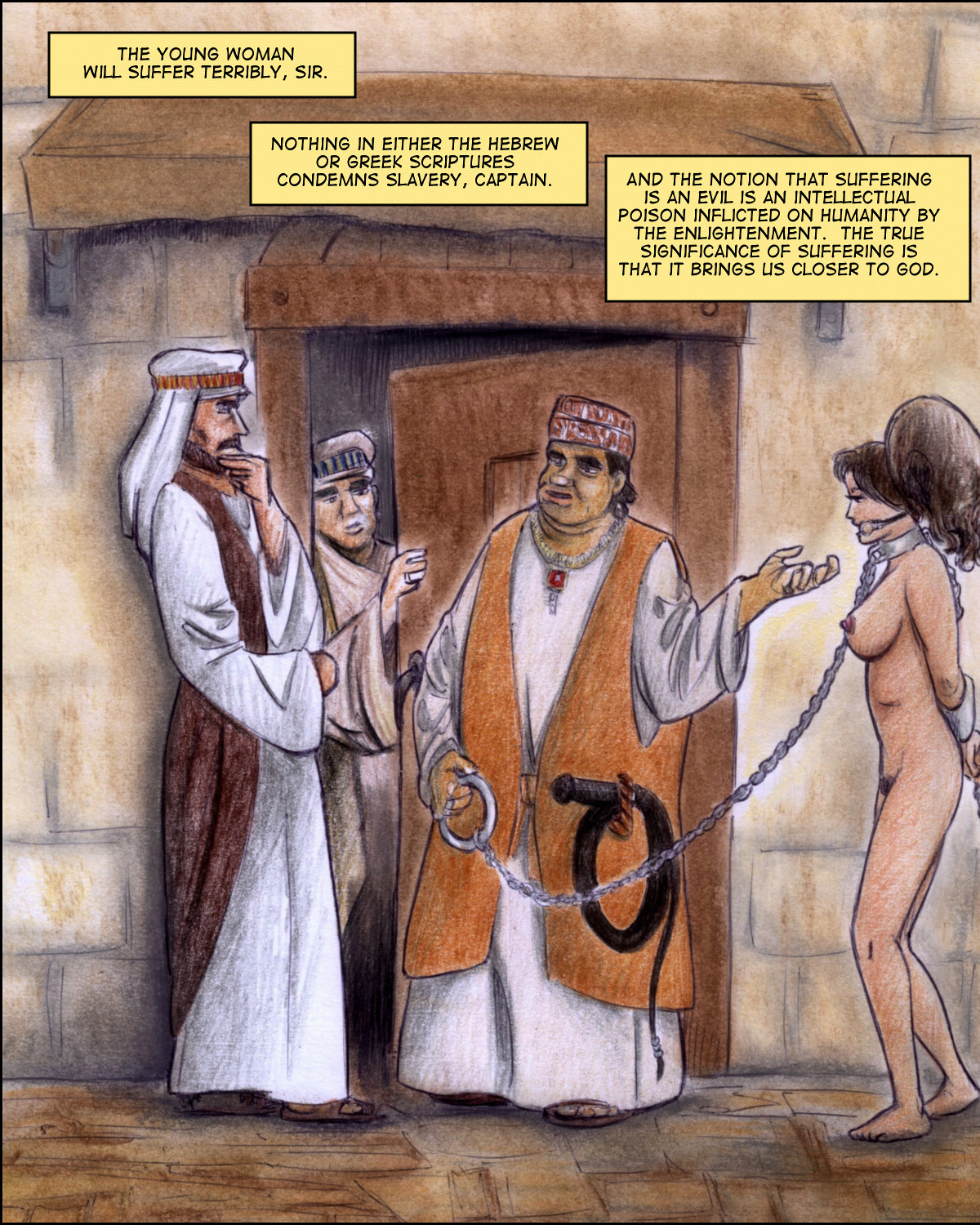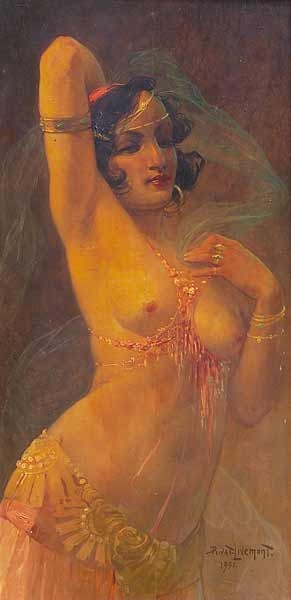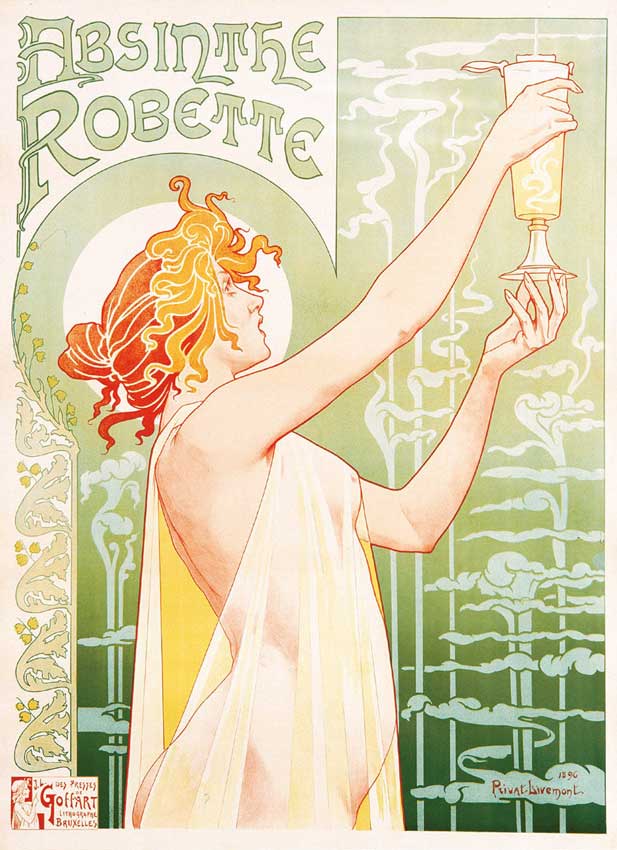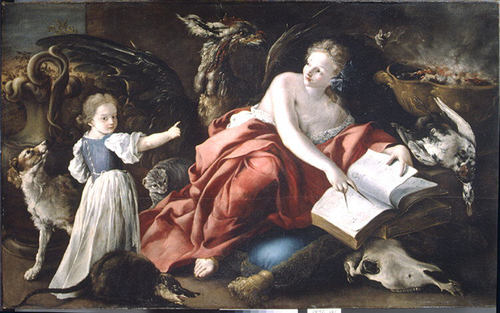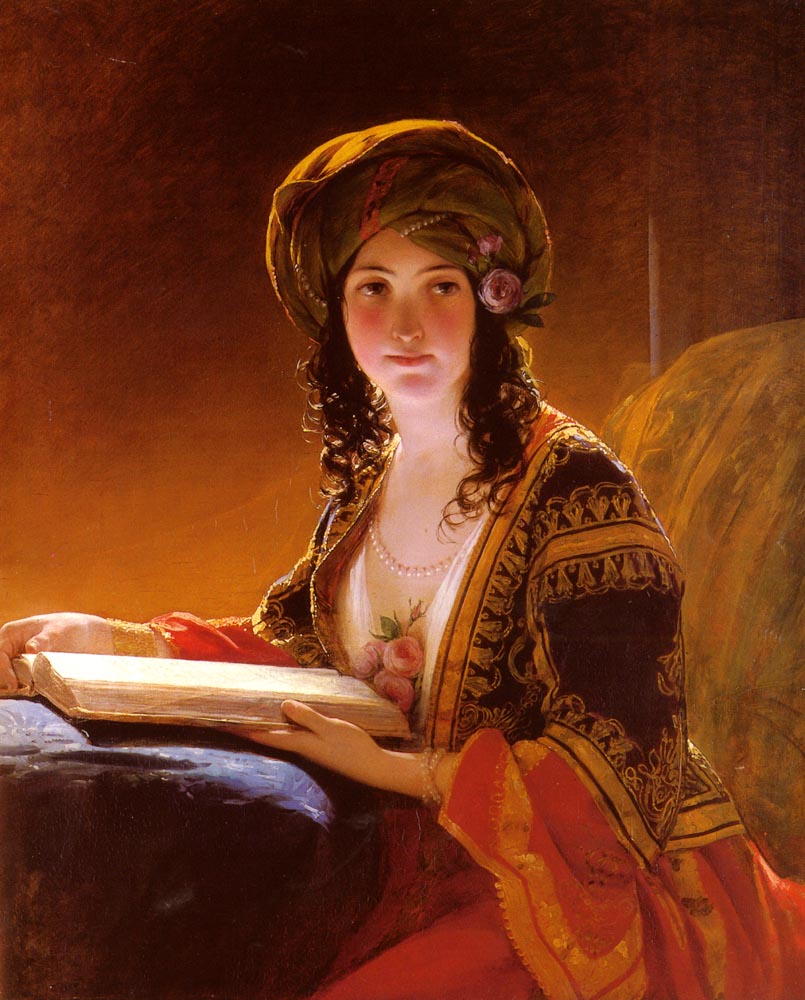I’ve often wondered what might have lead to my writing something like this exchange in The Apsinthion Protocol.
MOIRA
It would be a one-way trip for whoever did it.
NANETTA
It would mean giving up everything in this world.
MOIRA
And possibly entering a far more wonderful one.
NANETTA
Or it might mean a few moments of ecstasy, and then annihilation.
MOIRA
And there is likely very little time to decide.
(In my bleak moments I often think that what Nanetta and Moira would eventually achieve — even if it was just blissful annihilation — would be superior to the alternative: adulthood.)
One finds one’s erotic inspiration where one is. Where I was for a lengthy stretch of young adulthood was Harvard’s Widener Library. Had I had my druthers, the erotic inspiration would have taken the form of a studious-but-sultry meganekko but sadly there was a severe druthers shortage in Cambridge at the time and so I didn’t get mine.
There was, however, this mural executed by John Singer Sargent (1856-1925).
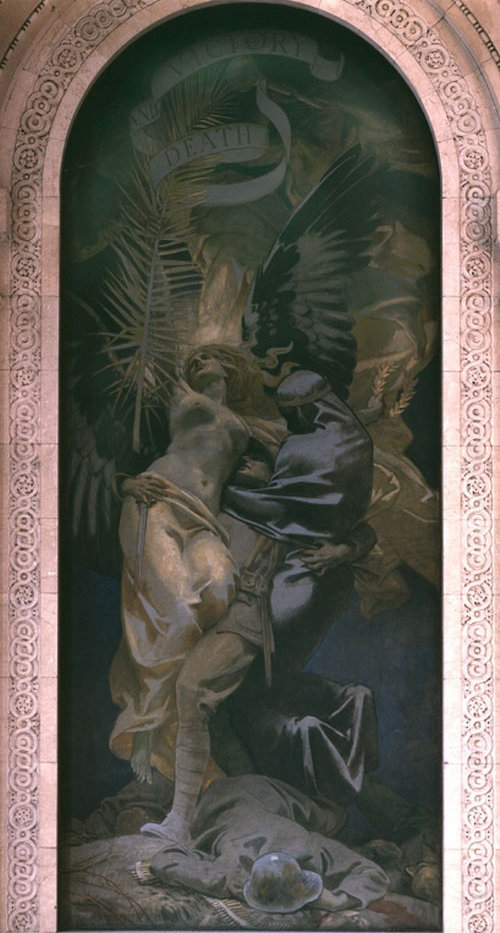
A doughboy embraces death and victory in the same moment. (We know he’s victorious because there’s a defeated figure in a stahlhelm at his feet, presumably one of those nasty wicked Germans.) At the time I would pass this mural daily (it’s on the library’s main entrance stairs) my conscious thoughts were that it was a singularly shameless bit of militaristic propaganda.
My subconscious thoughts, I conjecture, were on a different track entirely, thinking that maybe it’s cool — erotic even — to throw one’s life in like that. It’s a natural interpretation — look at the soldier’s face, it’s expression and positioning under Victory’s bared breast. It would explain a lot about the sort of things I’ve written.
Sargent didn’t do much in the more explicitly erotic line, although there is some, for example this study of a nude Egyptian girl.

Orientalist art — something I’ve found appealing before.
